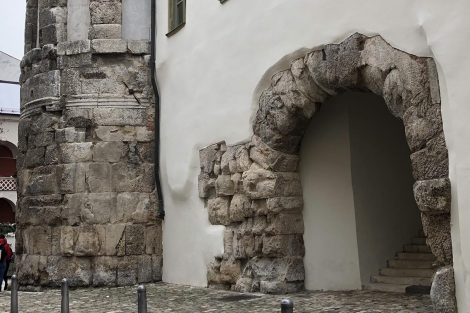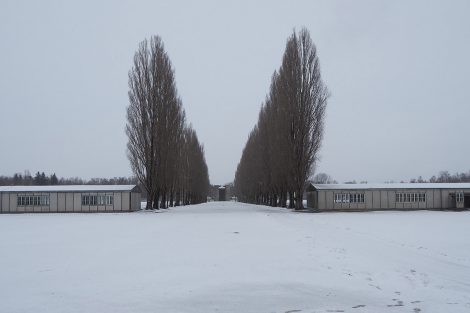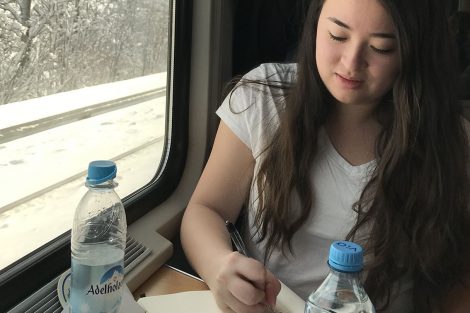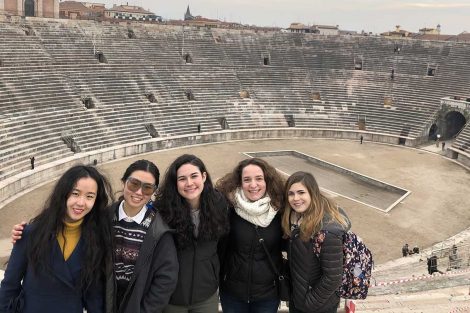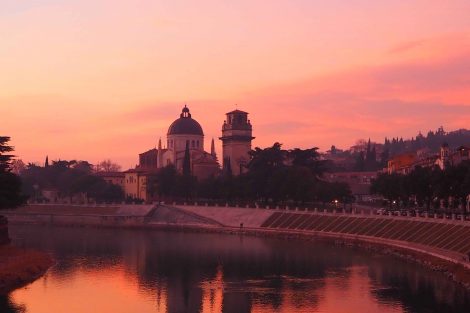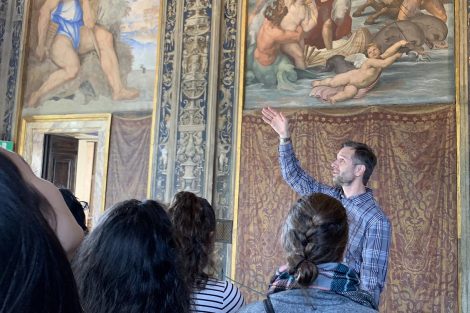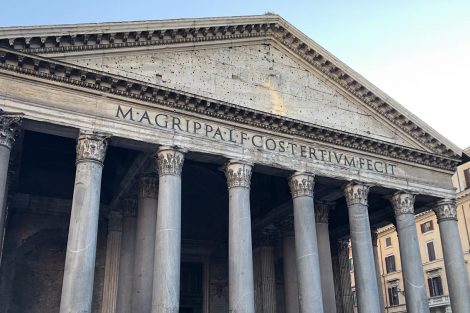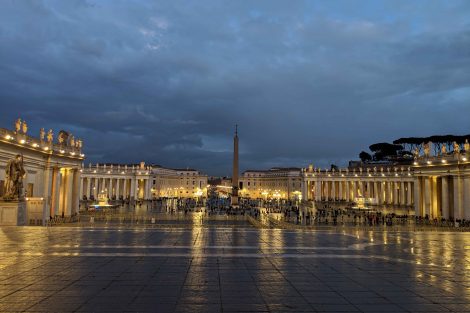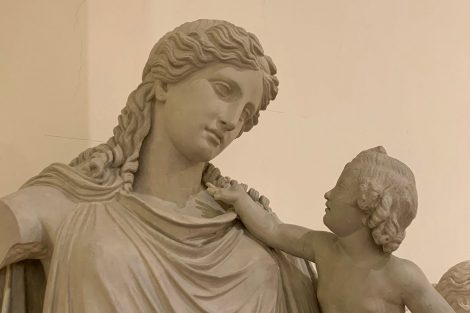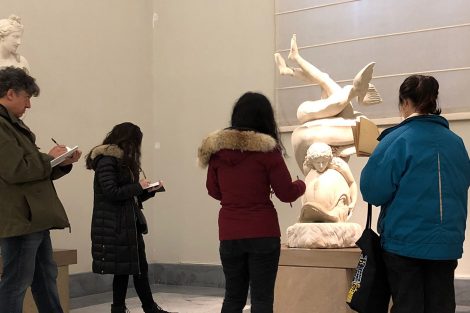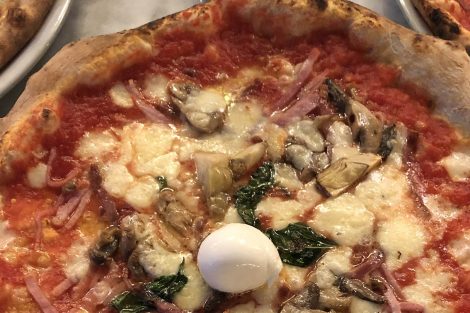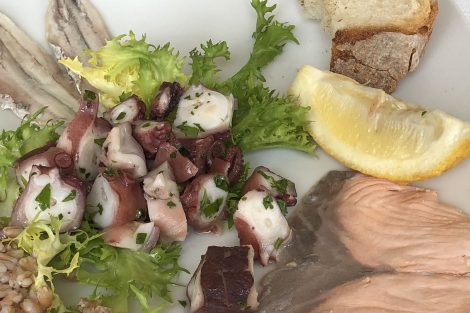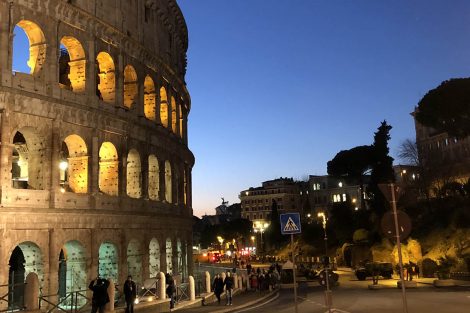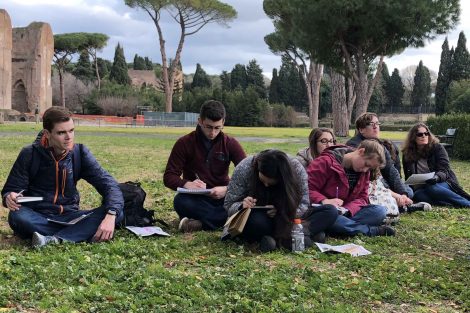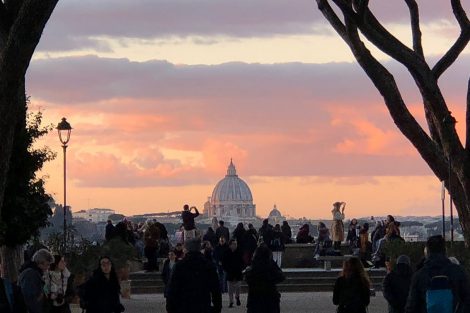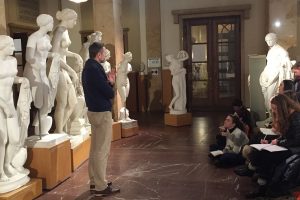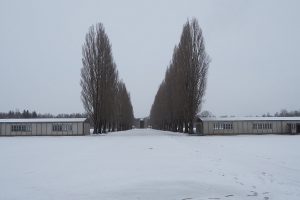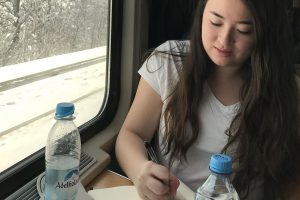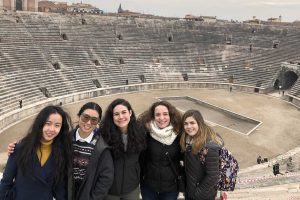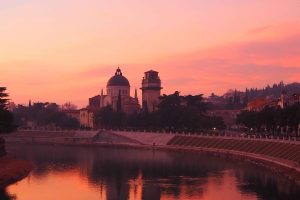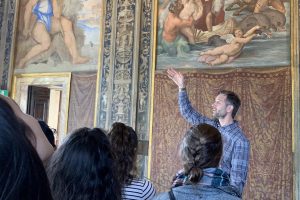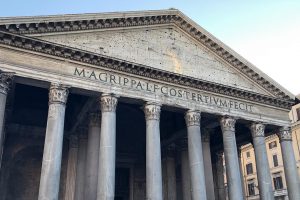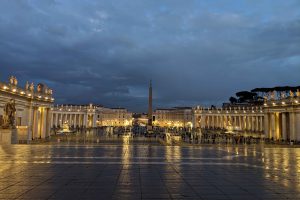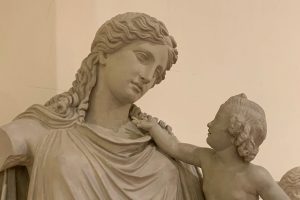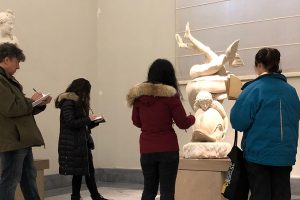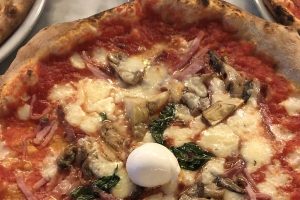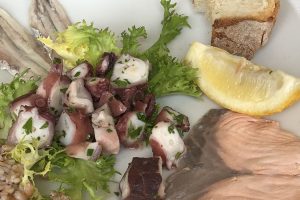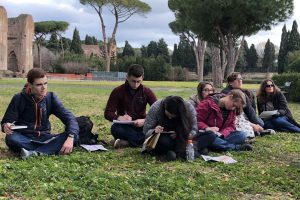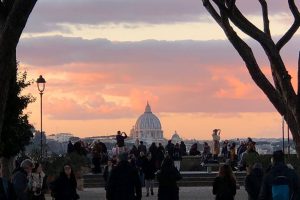Notice of Online Archive
This page is no longer being updated and remains online for informational and historical purposes only. The information is accurate as of the last page update.
For questions about page contents, contact the Communications Division .
A train ride from Germany to Italy through snow-covered Alps. The Pope’s blessing in St. Peter’s Square. Gazing clear blue sky through the oculus of Rome’s magnificent Pantheon. A somber visit to the concentration camp of Dachau. Walking through the once-volcanic ash-buried streets of ancient Pompeii.
These are some of the highlights 24 students experienced in the interim course “Journey to Rome: Approaching and Exploring the Eternal City” led by Markus Dubischar , associate professor of classics and Charles Elliott Scholar of Roman and Greek, and Nestor Gil , associate professor of art.
The 19-day journey combined classroom sessions with extensive archeological, cultural, and art-historical excursions. By following a centuries-old travel route from Germany to southern Italy, it sought to recreate the transformational experience noblemen, intellectuals, and artists pursued by traveling to the Eternal City during the 18 th and 19 th centuries.
“Someone looked at this ancient wall and figured it was still structurally sound enough to support a modern-day building,” says Katie Lee ’19, an electrical and computer engineering major. “That really speaks to to the skill of Roman engineers.” “One of my favorite things that we did was visit Munich University’s Museum of Casts of Classical Statues,” says Caleigh Schmid ’21, a neuroscience and Spanish double major. “There we were surrounded by perfect replicas of the most famous statues from all over Europe, for example, by different versions of the Aphrodite of Knidos, Capitoline, and Medici Venus.” “We entered Dachau concentration camp the same way as prisoners—silently in the snow,” says Kaitlin Nguyen ’19, a biochemistry major and art minor. “The air was frigid, but I had no right to complain. The people who once occupied the camp had no real protection from the crippling cold. I had two pairs of pants, a sweater, jacket, scarf, hood, wool socks, and sturdy boots.” “During our journey through the Alps, the urban architecture melted away, revealing snow-capped mountains and villages laid low in frosty basins under the soft glow of the morning sun,” says Molly Morris ’21, a classics major and art history minor. “I actually prefer the amphitheater in Verona to the Colosseum in Rome because the seats are still intact, allowing people to interact with the architecture in ways resembling those of the past,” says Angela Shi ’21, a computer science and comparative literature double major and music minor. “As I stood on ‘Juliet’s’ balcony and later watched the sunset from a hill across the river, I understood how the city could make someone feel in love,” says Emily Emick ’20, an economics and music double major and mathematics minor. “In the Villa Farnesina, I was struck once again by the beauty of a painting,” says Kaitlyn Nguyen ’19, a biochemistry major and art minor. “I can still vividly picture in my mind the face of Raphael’s Galatea, with her rosy cheeks and wonder-filled eyes. The painter brought the simultaneously delicate and powerful sea nymph to life in his fresco. With paint alone, he pumped blood through her body and immortalized her on the wall.” “Seeing the Pantheon allowed me to combine my passions for engineering and classical civilizations. I laid on the floor of the Pantheon and just stared into the heavens,” says Morgen Williard ’20, a chemical engineering major and classics minor. “I felt the presence spiritually of everything I’ve learned and believed. I felt my God there, and I felt at peace with the world while looking up through one of the greatest engineering feats of all times.” “I attended my first-ever Catholic Mass at the Vatican,” says Dan Goodman ’20, a biology major and economics minor. “Afterward, we went outside to literally be blessed by the Pope in St. Peter’s Square. Blessed by the Pope! Regardless of religion, this was an amazing experience.” “The statue that had the greatest impact on me was Michelangelo’s Pietà in St. Peter’s Basilica,” says Samantha DeMarse ’20, a religion and policy studies major. “The most striking part about this work is the visible pain and sadness on Mary’s face. I was familiar with the marble statue because it has special meaning in our family. It was very emotional for me to see it, and I was excited to tell my grandma that I saw it!” “One of my favorite things to do on the trip was to sketch sculpture,” says David George ’19, an international affairs major and economics minor. “I loved noticing all the crevices and lines that make up a statue. The closer I looked at the marble bronze forms the more I was able to observe sculpted muscles, tendons, and ligaments.” “I had really good pasta dishes in Italy, and the pizza in Naples was amazing,” says Jordan Gusdorff ’20, a physics major and architectural studies minor. “There would be a lot of time for conversation during and after dinner. I enjoyed the slow pace of meals and being able to savor the food and the company. It would be nice to have that experience more often in America, to see food as something that brings people together and is more than just fuel.” “I wanted to try every typical regional food I came upon, says David George ’19, an international affairs major. “In Munich, I ate pork knuckle. In Verona I ate donkey. In Rome I tried oxtail, wild boar, and bone marrow. Lastly in Naples, I tried sardine and octopi salad. My goal was to eat like a local.” “To be able to see the places and art that I had learned about in classes was mind-blowing,” says Molly Morris ’21, a classics major and art history minor. “I was in a constant state of awe.” “On our journey to Rome, I’ve learned so much about art, architecture, and myself,” says Katie Lee ’19, an electrical and computer engineering major. “I’ve gained a new appreciation for art, and my engineering knowledge helped me ask tons of questions about ancient and medieval building and design. However, I think the biggest outcome of this trip was my personal growth.” “If there is one Elysium or Arcadia in the world, it is Italy,” says Xiaoxioa Ma ’19, a classics and Italian studies major. “What I had read in books or seen in paintings became reality here.”
